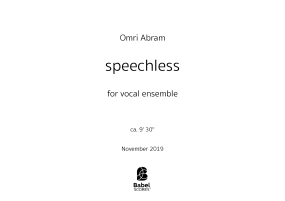the new normal
ISMN : 979-0-2325-4315-4
- Login to create your own lists
The summer of 2016 was a particularly violent and dark time in the world. The Arab Spring that began in late 2010 heralded a new era of suffering for the people of North Africa and the Middle East, prompting the mass migration of disenfranchised civilians from smoldering cities still steeped in conflict in what some have come to call the Arab Winter. Across Europe, sagging wages and a mass influx of fleeing refugees from Syria, fueled a backlash prompting the rise of populist, often xenophobic, right wing parties. The United Kingdom, a major economic and political force in the European Union, chose to leave the treasured international partnership, its people voting for isolationism and nationalism over unity and cooperation. In America, a feeling of dread and disbelief was tangible as a racist, sexist, billionaire presidential candidate gained in the polls, offering a gloomy picture of the United States – one that appealed alarmingly well to working class whites who felt left behind by globalization. Meanwhile gun crime in major cities like Chicago skyrocketed, while mass shootings, at malls, gay clubs, churches, universities, office buildings, and courthouses became a weekly occurrence. The plight of Black Americans who have experienced biased policing as a part of their daily life, became tangible thanks to the ubiquitous use of portable mobile devices and social media platforms that have, in some cases, broadcast these harrowingly violent and heartbreaking injustices live to millions of viewers on the web.
This work is my response to the events of the summer of 2016. I have chosen to use a method of collage, connecting short samples of six different musical passages. Divided into four continuous sections, each section, following the brief introductory part, features samples as its source material. Some of the samples are heard in their original forms in the fixed tape part while others are filtered, stretched, and/or orchestrated and performed by the instrumentalists. The second section contains samples of a recording by 20th century ethnomusicologist and folklorist Alan Lomax of Black prisoners at the Mississippi State Penitentiary at Parchman in 1947 chopping wood and singing Old Alabama. The harmonic backdrop for this second part comes from Ahi Troppo, ahi troppo e duro, an aria from Claudio Monteverdi’s 1608 Ballo delle ingrate (Ballet of the Ungrateful). In the aria, a women damned to Hades because of her lack of love, laments her return to the underworld after feeling for one last time, the sun and fresh air of Earth. An orchestrated sample of Japanese noise artist Merzbow’s 1996 album Pulse Demon also features prominently in the second section. The third and fourth sections similarly use an ancient song for their harmonic backdrop. In this case it is a small section of Henry Purcell’s Music for the Funeral of Queen Mary – a work written and premiered at the funeral of Queen Mary II of England in 1695. The harmonic material comes from a passage titled In the midst of life we are in death. The non-voiced pops, clicks, static, and beeps of police radio recordings from recent mass shootings and murders of unarmed Blacks by police officers are layered to create dense heterophonic textures.
Pages - 42




